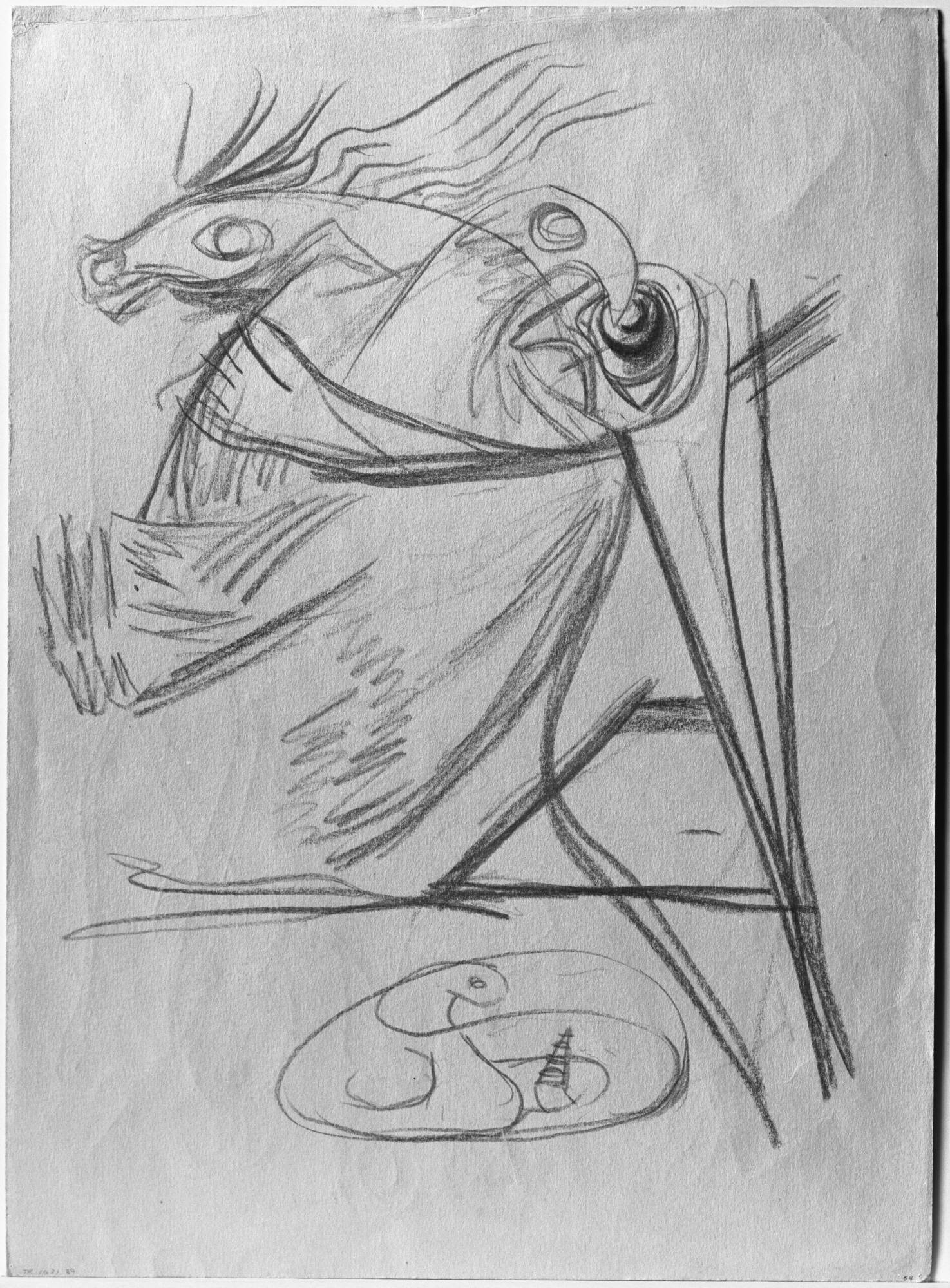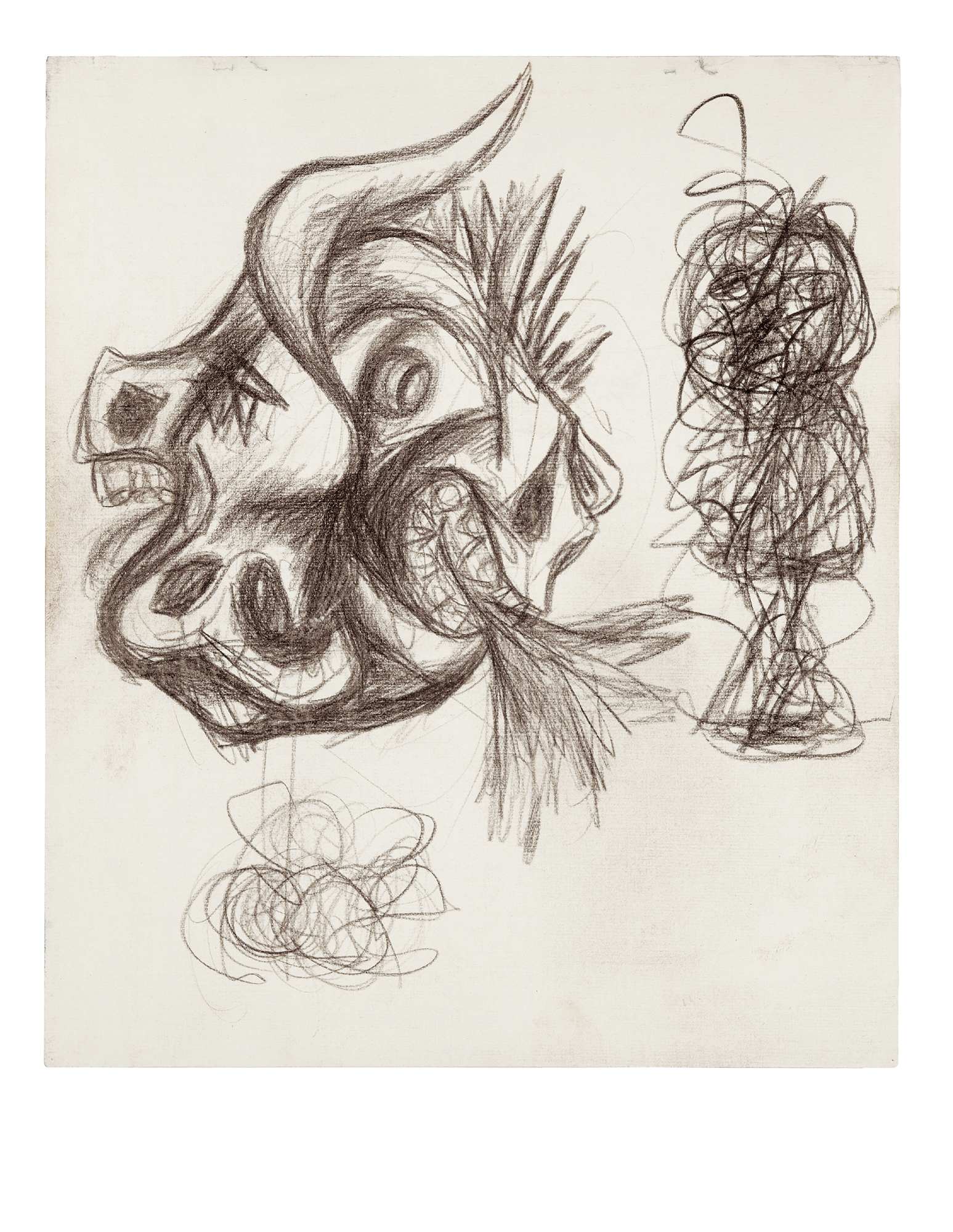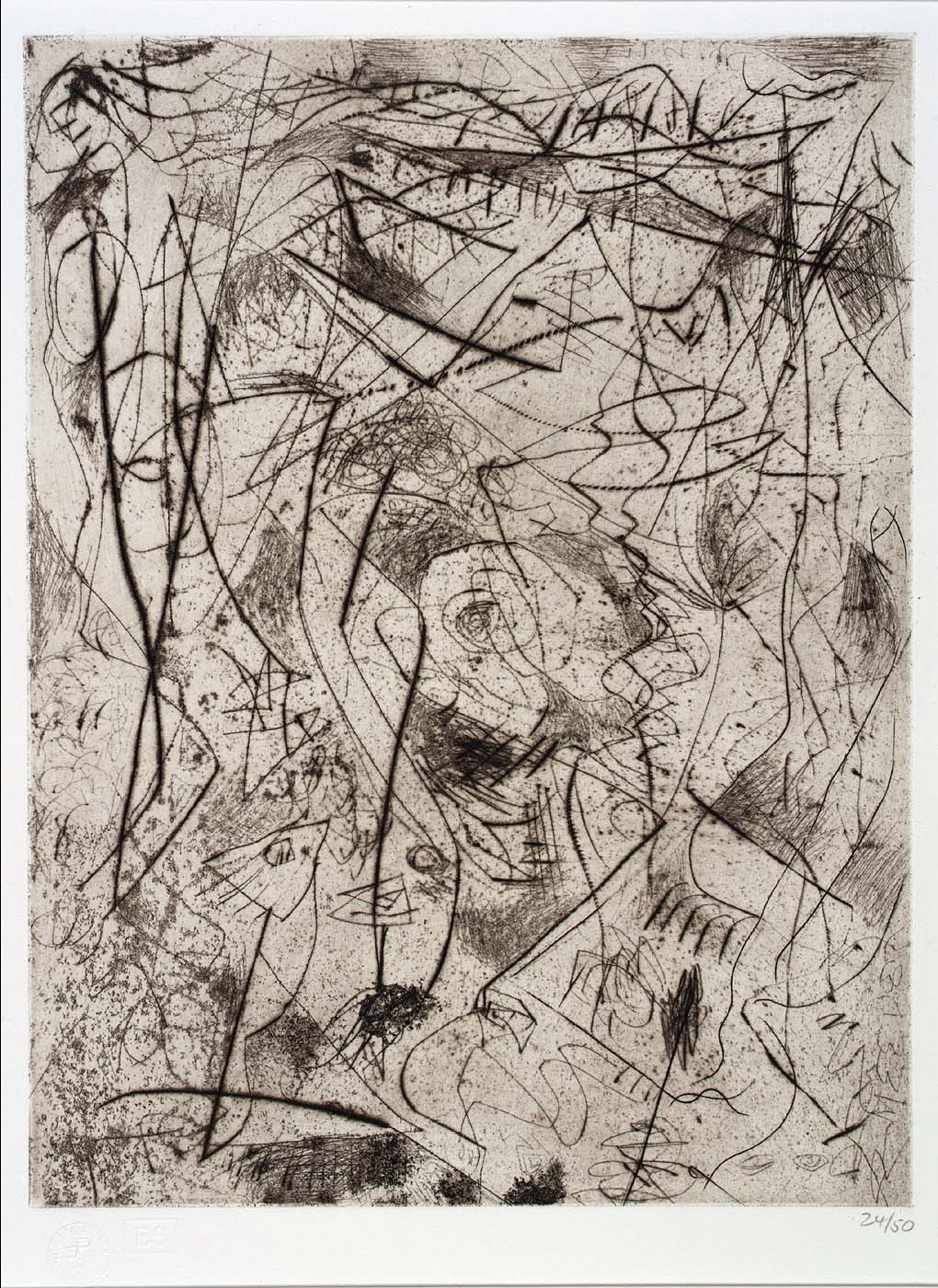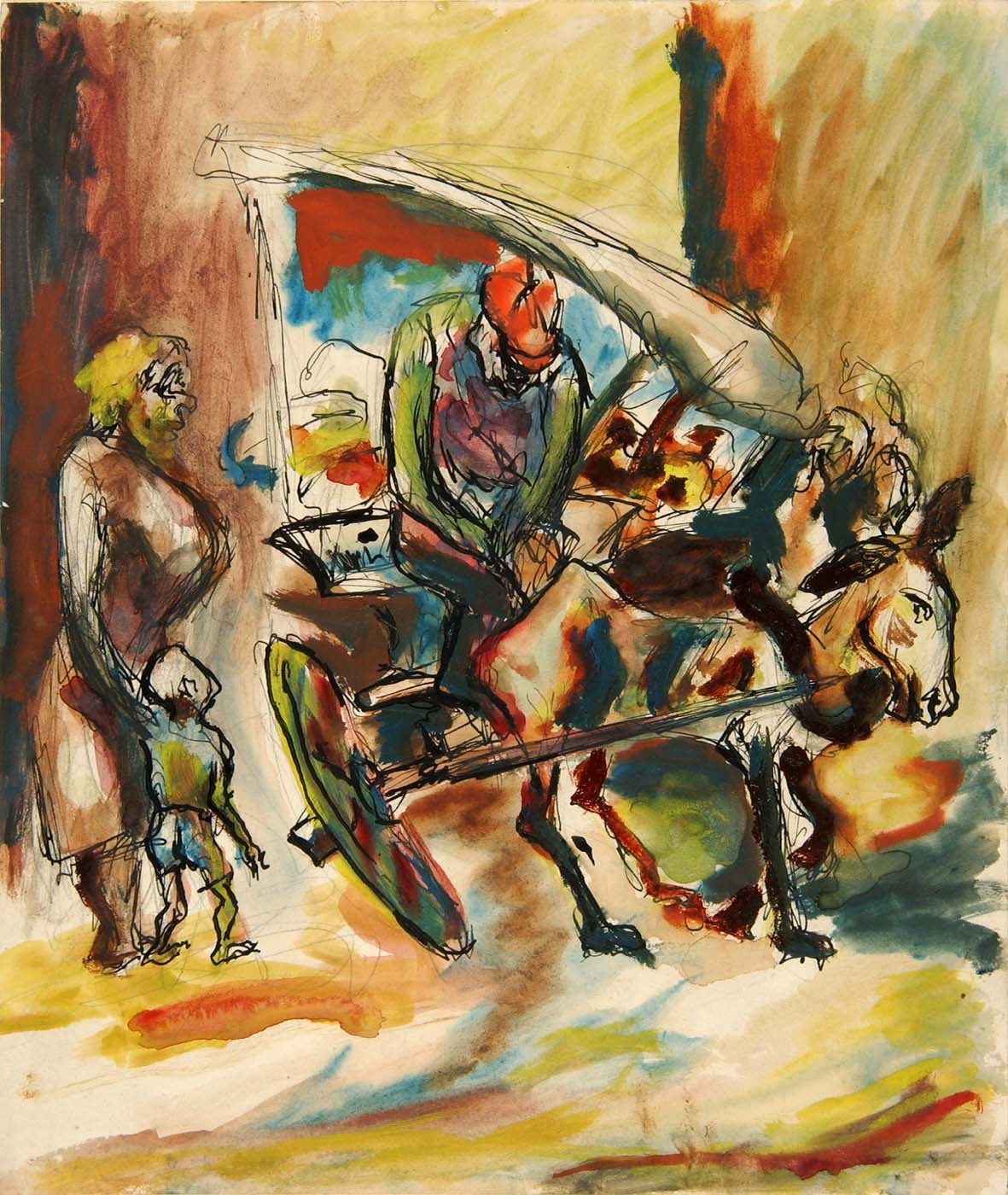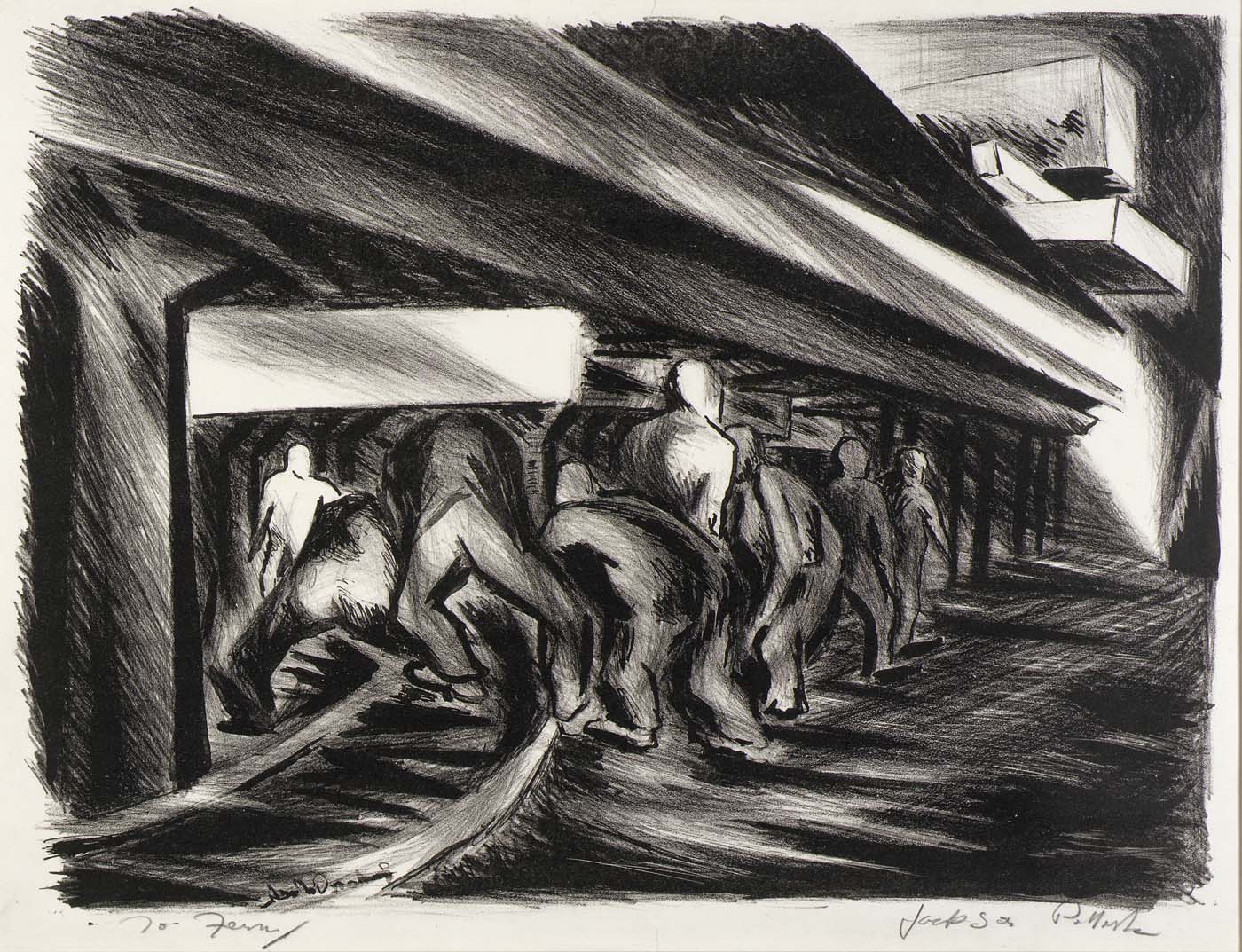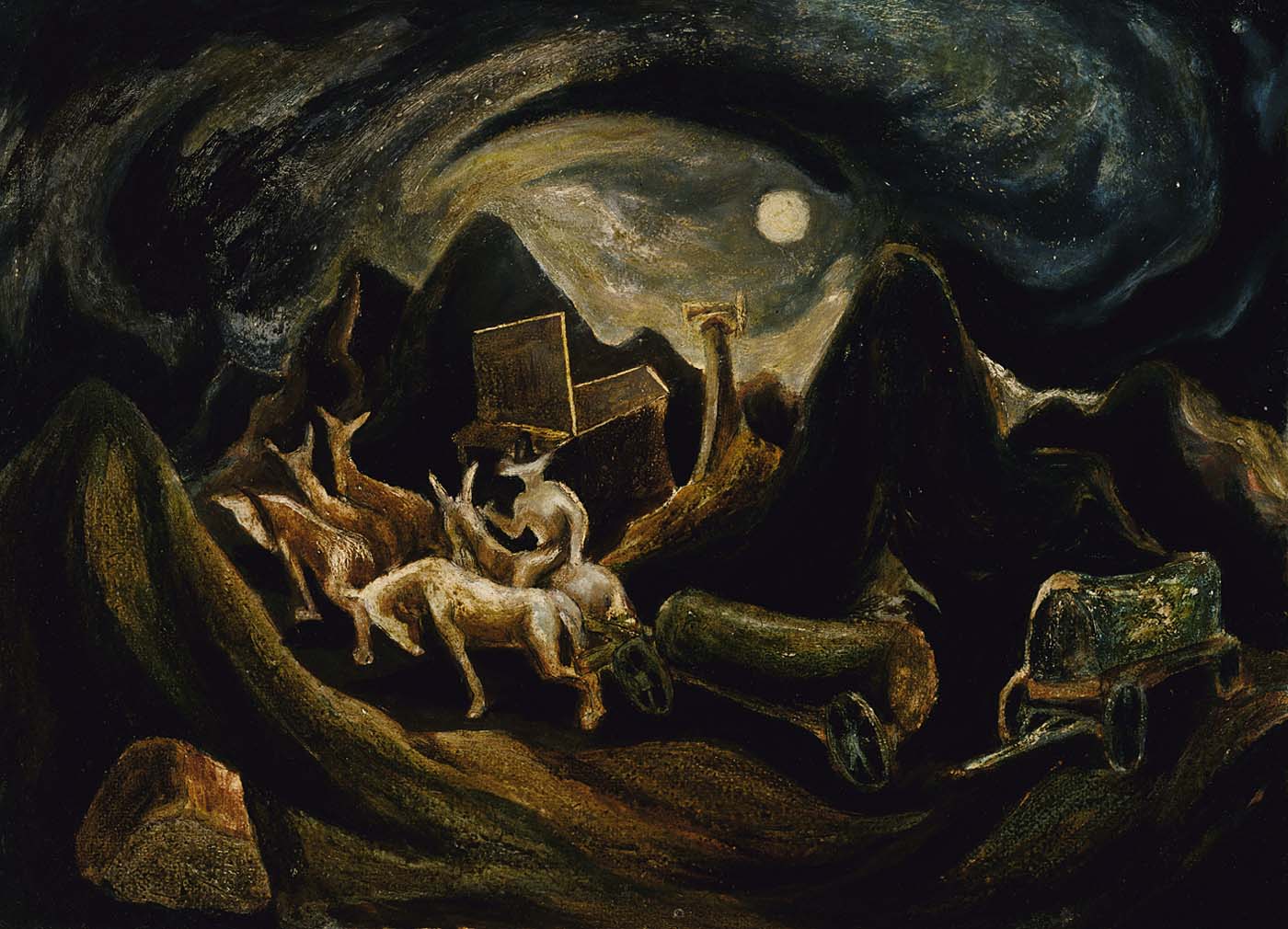Jackson Pollock
Perhaps more than any of his contemporaries, Jackson Pollock's work defined America's artistic coming of age. Born in Cody, Wyoming, he first studied art in 1925 in Los Angeles, where he developed an interest in sculpture. By 1929, encouraged by his brother, he moved to New York to pursue painting at the Art Students League under Thomas Hart Benton, who was to remain a supporter throughout Pollock's life. During the thirties Pollock blended his Benton-derived brand of Regionalism with elements of Surrealism. From 1938 to 1940, he worked for the WPA, creating representational murals. Pollock's marriage in 1945 to the artist Lee Krasner, a student of Hans Hofmann's, brought him into closer contact with the New York avant-garde.
In the early forties Pollock began to exhibit in New York and quickly became a star at Peggy Guggenheim's gallery, Art of This Century. At the time, Pollock was working in a variety of styles, using thick impasto as well as a rather mannered linear approach. But in 1947 he adopted the "drip" painting style for which he is best known. Working with his canvas on the floor and flinging paint, sand, ink, tar, and other materials onto the surface from all angles, Pollock revolutionized the concept of painting with this expressive, direct approach that came to be called "action painting." Both reviled and praised throughout the fifties for his boundary-breaking work, Pollock became the acknowledged leader of the new American movement called Abstract Expressionism. The artist was killed in an automobile accident in 1956.
National Museum of American Art (CD-ROM) (New York and Washington D.C.: MacMillan Digital in cooperation with the National Museum of American Art, 1996
Objects at Colby College Museum of Art (1)
Objects at Dallas Museum of Art (1)
Objects at Princeton University Art Museum (2)
Objects at Crystal Bridges Museum of American Art (4)
Objects at Smithsonian American Art Museum (4)
Objects at Archives of American Art (26)



